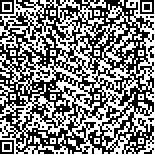宋晨,李江,韩超,等.不同频率功能性磁刺激对脊髓损伤后尿潴留患者排尿功能的影响[J].中华物理医学与康复杂志,2022,44(1):57-61
扫码阅读全文

|
| 不同频率功能性磁刺激对脊髓损伤后尿潴留患者排尿功能的影响 |
|
| |
| DOI:10.3760/cma.j.issn.0254-1424.2022.01.011 |
| 中文关键词: 脊髓损伤 尿潴留 功能性磁刺激 膀胱压力容量评定 肌电图 |
| 英文关键词: Spinal cord injury Urine retention Functional magnetic stimulation Bladder pressure Bladder volume Electromyography |
| 基金项目: |
|
| 摘要点击次数: 5046 |
| 全文下载次数: 9524 |
| 中文摘要: |
| 目的 观察不同频率功能性磁刺激(FMS)作用于骶3(S3)神经根对脊髓损伤后尿潴留患者排尿功能恢复的影响。 方法 纳入45例脊髓损伤后神经源性膀胱的患者,根据患者选择治疗方法的不同,按随机数字表法分为5 Hz组(采用5 Hz频率FMS治疗)、20 Hz组(采用20 Hz频率FMS治疗)和假刺激组(采用与5 Hz组同参数同部位的假刺激治疗),每组15例,最终5 Hz组中有1例因患者原因退出,共44例完成本研究。3组患者均在常规膀胱功能干预的基础上给予不同频率下刺激S3神经根的FMS治疗,其中5 Hz组给予频率5 Hz FMS治疗,20 Hz组给予频率20 Hz FMS治疗,假刺激组给予与5 Hz组相同参数、相同部位的刺激,加用假刺激拍,3组刺激部位均为S3神经根区,每日治疗均为20 min,每周5 d,共治疗4周。分别于治疗前和治疗4周后(治疗后),分别给予患者膀胱压力容量评定、肌电图检查,并详细记录治疗期间的排尿日记。 结果 治疗后,5 Hz组和20 Hz组患者的膀胱容量、膀胱压力、残余尿量、日均导尿次数、日均排尿次数、平均单次排尿量、H反射潜伏期和波幅、F波潜伏期和引出率均较组内治疗前均有明显改善(P<0.05),假刺激组治疗前后差异无统计学意义(P>0.05)。治疗后,5 Hz组和20 Hz组的膀胱容量、膀胱压力、残余尿量、日均导尿次数、日均排尿次数、平均单次排尿量、H反射潜伏期和波幅、F波潜伏期和引出率分别与假刺激组相比,组间差异有统计学意义(P<0.05);治疗后,20 Hz组患者的残余尿量、日均排尿次数、平均单次排尿量、H反射潜伏期和波幅分别与5 Hz组比较,组间差异亦有统计学意义(P<0.05)。 结论 5 Hz和20 Hz的FMS作用于S3神经根均可有效改善脊髓损伤后神经源性膀胱患者的排尿功能,且20 Hz组的治疗效果明显优于5 Hz组。 |
| 英文摘要: |
| Objective To observe any effect of functional magnetic stimulation (FMS) of the sacral 3 nerve root on relieving urine retention after a spinal cord injury. Methods Forty-four patients with neurogenic bladder disorders after a spinal cord injury were divided at random into a 5Hz group (n=14), a 20Hz group (n=15), and a sham stimulation group (n=15). In addition to conventional bladder control training, the 5Hz and 20Hz groups were given 20 minutes of FMS of the sacral 3 nerve root at the appropriate frequency five days a week for 4 weeks. The sham stimulation group was not given any stimulation. A detailed urination diary was kept during the treatment, and before and after the 4 weeks, everyone′s bladder pressure volume was assessed and an electromyogram was recorded. Results After the treatment those in the 5Hz and 20Hz groups had improved significantly in terms of average bladder capacity, bladder pressure, residual urine volume, daily number of urethral catheterizations, daily micturition frequency, single urine output, H-reflex latency, and the amplitude and incubation period of the F wave. Those in the sham stimulation group showed no consistent improvement in any of these indicators. Moreover, the average residual urine volume, daily urination frequency and H-reflex latency and amplitude of the 20Hz group were significantly better than those of the 5Hz group. Conclusions Magnetic stimulation of the S3 nerve roots can effectively improve the urination of persons with neurogenic bladder disorders after a spinal cord injury. The preferred frequency is 20Hz. |
|
查看全文
查看/发表评论 下载PDF阅读器 |
| 关闭 |
|
|
|